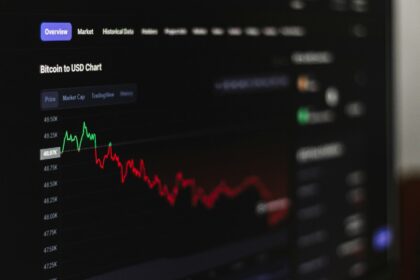Banks sit at the very center of the financial system-and they work far harder than simply holding cash. Inside those glittering towers sits a sprawling sea of data. Your deposits, loan applications, spending habits, and even the smallest login event all translate into zeroes and ones parked on powerful servers. Because of that, todays cleverest hackers stake their reputations on breaking in. Perhaps the bigger concern now isnt whether a given lender will suffer an intrusion, but rather when the next event will land on the headlines.
The continuing barrage of attacks leaves executives with a stubborn headache: assembling a team nimble enough to shield millions of accounts around the clock. Demand for cybersecurity experts has shot up, yet universities and training grounds cannot turn out fresh talent fast enough. That imbalance is where banking staffing services step in. Hiring alone wont fix the problem; organizations also need a thoughtful, layered approach that matches each role with the right skill set.
In the pages ahead we will map out the specific hurdles every banker faces, outline staffing models that blend in-house and outsourced resources, and name the essential positions waiting to be filled. Well share tactics for attracting, grooming, and keeping high performers in a job market that feels more cutthroat by the month. Consider this your guide to fortifying the human side of any institution’s cyber rampart.
Why Banking Cybersecurity is a Different Beast
Securing a bank is nothing like securing a corner store or even a big-box retailer. The potential loss of customer funds, investor confidence, and national economic stability gives every breach a severity many executives cannot fully grasp. Layer on legacy systems, regulatory pressure, and the need for twenty-four-hour service, and the security landscape quickly becomes a tangled web. Getting a handle on these distinctive factors is the crucial first step in deciding how many eyes, ears, and hands a bank really needs watching its digital perimeter.
The Bullseye of Financial Motivation
When cybercriminals hit grocery chains, they want card numbers they can quickly offload. Breaching a hospital may yield social-security digits that fuel long-term identity theft. Banks, however, sit at the end of the money pipe, and attackers know that one keystroke can move millions into their own pockets. Because the goal is instant cash, the people lining up against a banks defenses tend to be the best-supplied and most-determined talent on the Internet. Highly organised cyber syndicates rub shoulders with nation-backed squads, making the threat landscape feel more like a global arms race. Defensive teams therefore prepare for more than hobby hackers; they gear up for professional criminal enterprises playing for the house.
The Crushing Weight of Regulation
Walk into any modern bank’s control center, and you quickly realise that the fiercest adversary their defenders face isnt a cyber-hacker, its the mountain of red tape piled on from every corner of the globe. A single security glitch ceases to be just a bad day in the office; it escalates into a regulatory firestorm that touches every department. The alphabet soup alone is enough to make anyone giddy:
- GDPR (General Data Protection Regulation)-the golden EU rule that safeguards personal data and slaps fines of up to 4 percent on global turnover for even minor slip-ups.
- PCI DSS (Payment Card Industry Data Security Standard)-a ruthless playbook every card issuer must live by, where a serious lapse can strip the bank of its ability to accept plastic.
- SOX (Sarbanes-Oxley Act)-the post-Enron safeguard demanding robust checks on financial reporting, and by extension, deeply entwining itself with IT safety.
- FFIEC (Federal Financial Institutions Examination Council)-the gatekeeper in the United States, laying out maturity benchmarks and inspecting every byte.
Compliance is not optional, and its sheer scope is enough to exhaust even the hardiest teams. Today a banks security squadry half engineers, half legal savants-must decode regulations, tighten defenses, and assemble the airtight proof auditors crave.
The Fragile Ecosystem of Trust
A banks true wealth sits in the trust customers place in it, not just in cash stashed away behind steel doors. One high-profile security breach can crack that trust within moments. Today, thanks to social media, word travels faster than ever. Alarmed customers close accounts and pull deposits almost overnight. The lasting harm to a banks reputation usually overshadows the immediate dollars lost to the attack. For this reason, the security team ends up protecting more than data-they defend the banks very image. Reputation always comes first.
The Spiderweb of Interconnected Systems
Banks never work alone; they are keystone nodes in a sprawling global network. They link to international payment rails like SWIFT, national clearing houses, ATM grids, stock exchanges, and dozens of fintech partners. Each of these ties creates another potential entry point for intruders. A small flaw at a little-known vendor providing routine software can quietly turn into a back door for attackers to slip inside. Because much of that network lies outside direct bank control, securing the institution means hardening every edge of that vast, tangled ecosystem.
The Silent Siphon Incident: A Staffing Lesson
When Financia Bank-a mid-sized lender in Europe-set up its security staff, management assumed they were covered. They had seasoned people handling firewalls, patching antivirus signatures, and monitoring malware alerts. But one quiet morning a barely noticeable blip crept across the dashboard. Every hour, tiny fractions of cents streamed out of thousands of customer accounts to a foreign wallet. The amounts were so minuscule that no single client thought to complain, and the teams who usually chased free-wheeling ransomware simply looked the other way for weeks.
Realising something was still wrong, executives called in an outside forensic analyst who specialised in banking malware. Having tracked similar intrusions before, she recognised the classic salami-slicing trick within hours. After mapping the custom code to a breached third-party payment processor, her team plugged the hole and froze the fraudulent wallet. Calculating all the losses, the bank discovered the attackers had quietly slipped away with over one million euros. That painful result hammered home a crucial insight-generalist talent alone can leave dangerous gaps. Now, whenever Financia hires or trains staff, it pairs in-house experts with on-demand specialists fluent in the ever-evolving threats that target every corner of modern finance.
Models for Cybersecurity Staffing in Banks
Because every bank faces a unique set of assets and threats, and because resources are at once ample and tight, there is no off-the-shelf blueprint for building a security team. Rather, staffing choices should mirror the institution’s size, appetite for risk, and willingness to invest. Three core models keep surfacing in the conversation, and each carries its own benefits and drawbacks.
1. The In-House Fortress Model
Under this classic setup, the bank assembles its own in-house unit and treats cybersecurity as a homegrown specialty. Permanent employees take ownership of every piece, from setting strategy and writing policies to hunting malware and patching servers. Nothing is farmed out, and that can feel reassuring.
Pros
- Deep Institutional Knowledge: Because the team lives inside the bank, it learns the culture, the inherited code, and the political currents that shape decision-making. Familiarity with legacy systems and business quirks makes problem diagnosis faster and more accurate. This kind of context is hard to outsource.
- Full Control and Agility: When a new vulnerability pops up, the CISO does not have to call a vendor or renegotiate terms. Priorities can pivot in hours, and the same crew that wrote the policies is the one blocking the fresh exploit. Direct control saves precious time.
- Unwavering Loyalty and Dedication: In-house staff stake their careers on the banks reputation. Security wins and losses feel personal, fueling a work ethic that freelancers or contractors cannot quite match. After all, defending the bank is their full-time cause.
Cons
- Astronomical Cost: Hiring top-notch cybersecurity folks demands six-figure salaries; then add in benefits, bonuses, and pricy ongoing training. Setting up an around-the-clock Security Operations Center (SOC) in-house still ends up costing banks millions in gear and payroll.
- The War for Talent: Finding and keeping these specialists is brutal. Larger banks routinely lose candidates to fast-moving tech firms and shiny start-ups that pitch a friendlier culture and more flexible hours.
- Inevitable Skill Gaps: Cybersecurity is simply too wide a field. A small or midsize bank will almost never score world-class talent in every niche, whether its cloud security, mobile forensics, or hardware hacking.
- Risk of Burnout: Lean, in-house teams can quickly become overworked, which raises stress levels and drives turnover through the roof.
2. The Managed Security Service Provider (MSSP) Model
With this approach, the bank hands off most security tasks to an outside specialist. The MSSP works round the clock, watching, spotting threats, and jumping in when needed, all from its remote SOC, so the bank taps its wide-scale resources.
Pros
- Immediate Access to Expertise: The bank gets an instant roster of seasoned pros with varied skills, people who have tracked threats for hundreds of clients far beyond the banks own visibility.
- Significant Cost Savings: Handing security work to a third party usually costs less than hiring, training, and equipping an in-house crew, particularly when round-the-clock coverage is on the table. The bank gains access to enterprise-level tools and talent without fronting heavy capital costs.
- Focus on Core Business: With monitoring and response outsourced, the banks internal IT professionals can devote their time to strategic projects that boost revenue, rather than being pulled into daily fire-fighting.
Cons
- Loss of Direct Control: By passing the work to an outside firm, the bank gives up a measure of day-to-day oversight. How quickly alerts are handled and what steps are taken are set out in a Service Level Agreement, and that contract may bend slower than an internal team would in a crisis.
- The Business Context Gap: A remote team may struggle to grasp the banks unique risk profile, key assets, or internal politics. As a result, they might treat a minor warning on a crown-jewel server the same way they would treat a major event on a less vital system.
- The Provider is a Target: Because the Managed Security Service Provider itself is a prized mark for hackers, a breach there can spill data from all its customers. For that reason, vetting the vendors security posture and incident history is not optional; its the first line of defense.
3. The Hybrid “Co-Managed” Model
Todays top banks are moving toward a blended security setup thats quickly becoming the gold standard. By combining an in-house team with hand-picked outside experts, they get the strengths of both worlds. Inside, a core group of strategic leaders and architects works day-to-day on long-term goals.
That in-house crew, guided by the CISO, shapes the overall strategy, stays on top of risk, and makes sure every rule gets followed. They own the program in every sense. To tackle the never-ending flood of alerts, they link arms with an MSSP that covers the watch desk around the clock. On top of that, the bank can call in a specialized red team for a full-out penetration test once a year or keep an elite incident-response firm on speed dial in case of a major breach.
With this hybrid setup, Cybersecurity Banking staffing becomes flexible, scalable, and cost-effective. The bank keeps strategic control andDeep institutional know-how while tapping the speed and know-how of outside partners when needed.
Key Cybersecurity Roles Every Bank Needs
| Role | Core Responsibility | Why It’s Critical for a Bank |
|---|---|---|
| Chief Information Security Officer (CISO) | The strategic leader and translator. Sets the vision, manages the budget, and communicates complex cyber risks in simple business terms to the board of directors. | Provides the crucial link between the technical engine room and the executive bridge. Ensures security is a board-level priority and gets the funding it needs. |
| Security Architect | The master planner. Designs the banks security infrastructure. Ensures new products like mobile banking apps and online loan platforms are built securely from the ground up Security by Design. | Prevents vulnerabilities from being introduced in the first place. Its infinitely cheaper to build a secure house than to patch a broken one. They build the secure foundation. |
| Security Analyst / SOC Analyst | The front-line digital soldier. Monitors a constant stream of security alerts from various tools, investigates suspicious activity, and is the first to respond to potential threats. | Provides the 24/7 vigilance needed to detect attacks in real-time. They are the ones who spot the faint signal in the noise that indicates a major attack is underway. |
| Penetration Tester / Ethical Hacker | The friendly enemy. With the banks blessing, they actively probe digital storefronts, backend servers, Wi-Fi networks-even front doors and server rooms-for cracks a real attacker could exploit. | Provides a fresh, unfiltered look at how sturdy security really is. Because they think like an outsider willing to spend time and money, they turn blind spots into line-item fixes the in-house team might miss. Its the closest thing to a live-fire drill for the entire operation. |
| Compliance Officer / Analyst | The rule keeper. Deeply fluent in every twist of Sarbanes-Oxley, GLBA, PCI-DSS and a thousand other acronyms, they conduct internal spot checks, assemble tidy binders for visiting auditors, and badge-check every new policy against the latest legal fine print. | Shields the bank from six-figure fines, reputational black eyes and legal snares that stretch years. In a world where rules never stop mutating, they are the steady pulse that keeps risk within daylight hours. |
| Digital Forensics and Incident Responder (DFIR) | The crime-scene investigator and first responder rolled into one. When an alert blinks red, they slice through malware, follow data trails, quarantine poisoned servers and mop up digital proof for later court battles. Each finger-trace left by an attacker is a future lesson, so they package findings in plain English for engineers, lawyers and executives. | Their speed caps the financial bleed, gathers dirt for litigation, and feeds the bigger picture that keeps the same trick from working twice. |
A former FBI cyber agent once remarked, “There are two types of firms: those that have already been breached and those that are still unaware they have been breached.” For banks, that insight makes a top-notch incident-response team less a luxury and more a lifeline.
The Great Challenge-Finding and Keeping Talent
The chief bottleneck in building that team-readily acknowledged across the industry-is the global shortage of skilled people. Demand for cyber experts dwarfs the pool of available workers. To secure and retain the best, banks must be both imaginative and relentless.
Rethinking Pay, Perks, and Purpose
Competitive pay, while essential, is only the table stake. High salaries alone wont lure or hold talent for long. Firms also need generous benefits, performance bonuses tied directly to security metrics, and a transparent path for advancement: an analyst should see how he moves up to senior engineer, architect, or manager.
To shake off the old image of being slow, stuffy, and one-step-behind technology, banks need a fresh, empowering culture. The best people today look for meaningful work backed by modern tools, and they want every department, including IT, seen as a business partner instead of just a line-item cost. That means giving smart teams room to experiment, a real budget for next-gen tech, and a seat at the table when the bigger strategy is being hammered out.
The Power of Continuous Learning
Threats never sit still, and a skill that looks crucial now may be useless in eighteen months. Because of that, banks must pour resources into their people. A generous fund for ongoing training, respected certifications-CISSP, OSCP, GIAC-and trips to marquee events like Black Hat and DEF CON keeps defenders sharp and shows everyone the firm is serious about their growth.
Building a Talent Pipeline
No bank will strengthen its security simply by poaching outsiders with decades of experience; it has to develop talent from the ground up. That means planting seeds today through close ties with local universities and community colleges. Internships, sponsorship of capture-the-flag contests, and targeted scholarships give eager students a foot in the door and a reason to stay. When a firm invests time and resources in young people, it harvests a loyal and sustainable pipeline that feeds the organization for years.
Expanding the Search
Some of the best security minds never set foot in a computer-science lecture hall. Analysts with military intel, law-enforcement, data-science, or even psychology backgrounds often excel because they think critically, spot patterns, and read human behavior well. A recruitment strategy that ignores those routes misses valuable talent. Hiring managers should also shed old geographic limits. The cloud security whiz living in Poland could solve a Kansas banks biggest problem tomorrow. Remote and flexible work turns that distant candidate into an everyday colleague and shrinks the employers own talent drought.
Conclusion: Staffing is Strategy
In the fast-moving financial-services arena, the strength of your cyber shield rests squarely on the shoulders of your people. Hiring managers should not think of team-building as an administrative chore; it is a do-or-die part of every banks overall game plan. Smart staffing is not simply about plugging gaps; it is about crafting a deep, agile defense run by talent that knows its job inside and out.
Whether a bank goes all in-house, partners with an expert firm, or picks a blend of the two, one mission drives every choice: put the right skill set in the right seat at the right hour. That mission demands a steady, forward-looking cycle of scouting, teaching, and keeping the mission-oriented protectors who secure every transaction across the global network. In the end, even the slickest code and toughest appliances fall flat without sharp, eager minds guiding their every move.
























